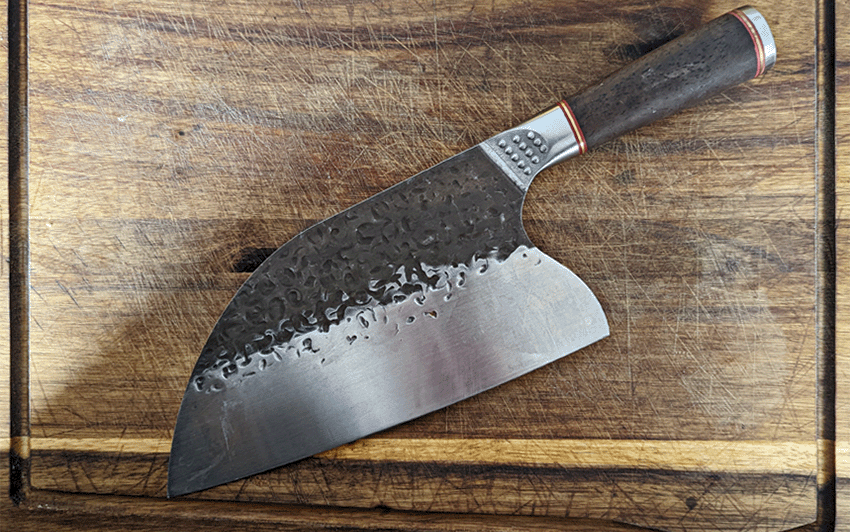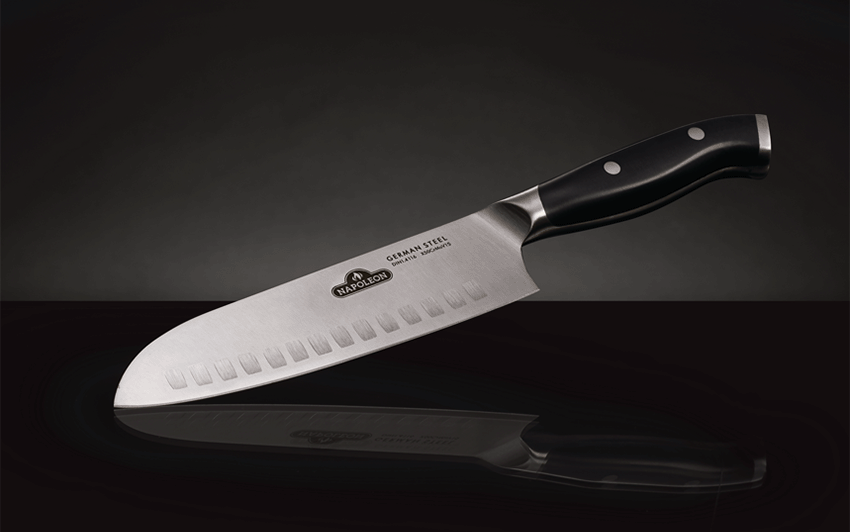
Know Your Knives - The Purpose of Different Knives
Part of choosing the best knives for your collection is knowing the kinds of knives and what they do. You already know the materials and what to look for when it comes to knives. This article is here to help you understand the different types of knives and what tasks they are used for so that you can choose the best knives to build or expand your collection.
Different Knives with Different Purposes
The Chef's Knife
With a size ranging from 6 to 12 inches (15¼ cm to 30½ cm). The Chef’s Knife is a general-purpose knife that is ideal for most tasks like slicing, chopping, and dicing. This is the go-to knife that most professional and less experienced chefs will reach for. The front is curved upwards towards the spine which allows the knife to rock for efficient chopping action. The chef’s knife will also have a broader heel – the furthest back edge of the blade – ideal for heavier tasks and harder foods. Unfortunately, if there is a cooking accident involving a knife, it will likely be due to this knife due to its size and the fact that it is generally (should be) kept incredibly sharp.
The Paring Knife
Paring knives are for precision, peeling, deveining, and slicing of small fruit. Suited for small or subtle tasks, the blades of a paring knife are anywhere from 2 to 4 inches (5 to 10 cm) and perfect for the small jobs that require a small and sharp blade. Every kitchen should have a knife, like Napoleon’s Paring Knife for small jobs.
The Utility Knife
A pairing knife’s larger cousin, the utility knife is bigger than a paring knife but smaller than the che’fs knife. This in-between size is very similar in length to a steak knife with a shape more like the chef’s knife. Usually at least 6-inches (15¼ cm) in length, this knife is ideal for intricate work and great for chopping and dicing smaller and delicate foods like peppers and shallots.
The Bread Knife
This serrated knife, also known as the bread knife is ideal for a number of things that have a harder outside and soft inside. This includes bread, cakes, fruit, and vegetables - ones with a delicate skin like tomatoes and grapes. The blade resembles a little saw, and it can range in length from 8 to 12 inches (20 cm to 30½ cm). These knives were designed to cut without crushing the texture of fluffy or delicate foods by using only the weight and motion of the knife to do the cutting instead of force like a chopping knife.
The Steak Knife
The Steak knife is not just for steak. Other cooked proteins and vegetables are also far easier to slice and eat with the steak knife. Many purchase their steak knives for style, although the blade type should be kept in mind as well. Steak knives can be serrated or straight edged. Serrated blades cannot be sharpened easily, these blades can tear the meat which can be unappealing visually. A straight edged steak knife slices more elegantly and can be sharpened and kept sharp far easier, although these can be harder to come by. Shaped somewhere between a butter knife and a utility knife, these knives are generally around 8 to 9 inches (20 cm to 23 cm) long and are not intended for anything food prep related.
Napoleon’s Steak Knives are the best of both worlds. A serrated tip helps cut through that delicious grilled crust while the flat edge glides through meat without tearing. The wood handle is buttery smooth and super stylish. It’s the perfect addition to your knife collection.
The Fillet Knife
Long and slim, very flexible and sharp, the fillet knife is ideal for intricate bone removal and separating skin from meat. It is very similar to the boning knife and perfect for fish as it’s been designed to cut in a horizontal motion instead of vertically like most other knives. Ranging from 6 to 11 inches (15¼ cm to 28 cm) long, this member of the boning knife family is great for both fish and bone-in meats.
The Boning Knife
Another long and slim blade, the boning knife features a thin blade that is light and maneuverable. Ranging in length from 5 to 7 inches (13 cm to 18 cm) these blades are ideal for trimming fat, trimming meat, and separating meat from bone like deboning chicken. They are not great for any chopping action but more suited to precision work.
The Carving Knife
Carving knives are longer than most knives at between 8 and 12 inches (20 cm to 30½ cm). They are thinner to create less drag when slicing through meat. They are also great for working with cakes, fruit, and melons. They provide smooth cutting for soft items and are not going to be well suited to hard foods and general prep work like chopping. Napoleon’s Carving Knives are long and elegant, ideal for gliding through that perfectly smoked brisket or carving up your perfectly prepared holiday roast.
The Cleaver
This big and heavy knife is intended for easily cutting through cartilage and bone, it’s ideal for raw meat and big cuts. The cleaver is also broad enough for crushing garlic and ginger into paste easily, which can be helpful when preparing your favorite meals. Weighty, generally rectangular and often times sporting a hole near the spine, the 6 to 8 inch (15¼ cm to 20 cm) blade doesn’t have the shape of a typical knife but is a great asset when you prepare big cuts or heavy and hard vegetables. An exception to the rule of shape for a cleaver is the Serbian Chef’s Cleaver which features a stylized sheep’s foot shape. This blade is gaining popularity for its unique body and versatility.
The Santoku Knife
The santoku knife is a different form of chef’s knife, slightly smaller and easier to control. This knife is ideal for those with smaller hands or that fatigue faster when dealing with large amounts of prep work. This knife is very multipurpose and a good all-around knife to have if you don’t have or want to get the traditional chef’s knife. This large, broad blade averages between 6 to 7 inches (15 cm to 18 cm) and features a drop point which is where the spine of the blade, the thicker part that is not sharp, curves towards the tip/point of the blade adding strength. The santoku will often times feature blade dimpling (known as Granton edge) which helps to keep food from sticking to the blade when you are working. This broad blade can be helpful to scrape up and transport chopped food from the bench to the pot or bowl. This Santoku Knife by Napoleon is beautifully balanced and a brilliant counterpart or stand-in to the Chef’s Knife. Great for any collection.
Now that you are familiar with at least ten of the most popular blade styles as you begin or expand your knife collection, which will you choose? Which knives do you need? Remember that you can begin customizing your collection with the blades you need and use most. You can also start with a pre-built block and add higher quality knifes suited to your preference as you evolve your skills and needs. Knowing the kinds of knives and what they do is as integral to knowing how to choose the best knives. Share your journey on finding your knives and what delicious meals you create with them on our social pages like Facebook and Tiktok using the hashtags #NapoleonEats and #NapoleonGrills.





